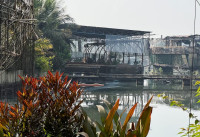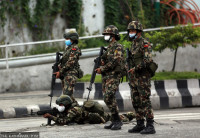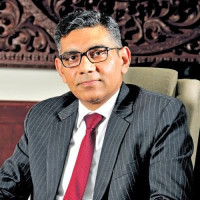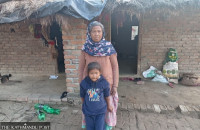National
Lapsephedi substation feud nowhere near solution with high–level committee endorsing NEA’s position
Continued indecision on the substation could complicate power transfer to Kathmandu Valley from hydropower projects built on Sunkoshi and Tamakoshi rivers.
Prithvi Man Shrestha
A high-level government-formed team has recommended construction of a transmission substation at the initially determined location in Lapsephedi of Shankarapur Municipality-3 with the backing of majority members.
The recommendation, if implemented, could invite clashes with the locals who had earlier obstructed preparatory works to construct the substation for the 400kV Naya Khimti-Barhabise-Lapsephedi power line.
Nepal Electricity Authority (NEA) said the transmission line is vital to bringing power from the plants built on the Tamakoshi and Sunkoshi rivers and their tributaries to Kathmandu Valley, which is the country’s major load centre.
“The committee has suggested building the substation at the proposed site as it could not be relocated from the most suitable location and the government had acquired the land by following the due procedure,” Tara Prasad Pradhan, deputy managing director of the NEA, told the Post. “The committee’s report, however, advised maximum flexibility on providing compensation for the owners whose lands would be used for the electricity transmission right of way.”
The committee also recommends addressing the concerns of the local residents related to socio-economic development such as water supply, electricity, school and temple and skill training for the residents to help them get jobs.
The Ministry of Energy, Water Resources and Irrigation had formed a committee headed by its Joint-secretary Sandeep Kumar Dev and represented by both officials and the representatives of protesting locals. Locals including Ranjeet Tamang and Tularam Tamang participated in the initial meetings but boycotted them afterwards.
“As the government representatives on the committee refused to entertain our demand for an alternative location of the substation, we pulled out of the committee,” said Tularam Tamang, a representative of the protesting residents. “We insist on the relocation because the proposed substation will be in the middle of the Tamang settlement. A high tension line would affect most of the Tamang settlement around.”
The NEA insists that the proposed location need not be altered also because almost all of the land owners have already received the compensation.
NEA officials said that some local politicians and non-government organisations had instigated the locals for protests who were otherwise ready to allow the substation project to go ahead.
A local representative in the committee also admitted that almost all of the locals have already received the compensation. However, he claimed that the land was acquired without following the legal procedure and the locals were forced into submission.
With the representatives of the local people not owning up to the report, the NEA will find it hard to construct the substation at the locations. The state-owned power utility has not taken any decision on how to move ahead on constructing the substation. “Our first efforts will be to reach an understanding with the locals to build the substation at the proposed location,” said Pradhan. “If an understanding is not reached, we may have to work there under police protection.”
The local representative at the committee said they would continue to protest against the substation plan at its current location. “The government itself will be responsible for any outcome of the protests,” he warned.
Considering the local protest, Shankharapur Municipality itself in its budget for the last fiscal year 2022-2023 had vowed to make efforts to relocate the substation.
“As the substation and the Tamakoshi transmission line will affect the settlement of indigenous nationalities, a request will be made to go ahead with relocating the substation,” the local unit’s budget for 2022-2023 states.
Surya Bahadur Tamang, ward 3 chairman of Shankharapur Municipality, insisted that as representatives of protesting locals didn’t sign the committee's report, it was imperative that further discussion with locals on settling the dispute is a must. “As an elected local representative, I am in favour of further discussion with a positive attitude to settle the dispute,” he said.
Due to a delay in completing the construction of this high-capacity power line, the NEA has failed to bring the power generated from the country’s largest 456MW Upper Tamakoshi Project directly to the Kathmandu valley. After the Upper Tamakoshi came into commercial operation in August 2021, its power has been taken to Dhalkebar from where the electricity is being transmitted to the eastern region as well as Kathmandu. According to the NEA, it has incurred higher power leakages because of the long distance the transmission line covers.
“Construction of this substation is necessary as we have almost completed constructing Naya Khimti-Barhabise-Lapsephedi transmission line,” said Pradhan. “Otherwise, we cannot bring the power generated by hydropower projects on Tamakoshi and Sunkoshi rivers and their tributary streams.”




 16.12°C Kathmandu
16.12°C Kathmandu













%20(1).jpg&w=300&height=200)

